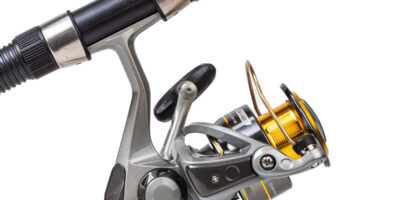How to Catch Fish in Different Weather Conditions
How to Catch Fish in Different Weather Conditions
Sunny Days
Fishing on sunny days can be both challenging and rewarding. Fish tend to stay in deeper waters to avoid the bright light. Using lures that mimic natural prey can be effective. Bright, reflective lures work well since they can catch the attention of fish even in deeper water.
In smaller bodies of water, look for shaded areas. Structures such as docks, logs, or submerged trees provide shelter for fish. Early mornings and late afternoons, when the sun is lower, can be the best times to fish. The reduced light encourages fish to come closer to the surface.
Surface temperature also plays a role. As the water warms up, fish metabolism increases and they become more active, often feeding more aggressively. Light tackle and finesse techniques, such as using smaller bait and lighter line, can often yield better results in clear water under sunlight.
Cloudy Days
Overcast skies can provide some of the best fishing conditions. The subdued light makes fish feel safer to venture into shallower waters. This makes them more accessible. Fish are more likely to be spread out rather than hugging structure.
Use darker lures or live bait that contrasts well with the murky sky. This will help fish detect your offering more easily. More aggressive retrieval techniques can work better, as fish are less cautious on cloudy days.
Bass, in particular, become more active and aggressive under cloud cover. This is a good opportunity to experiment with various types of baits and lures. Spinnerbaits and crankbaits can be particularly effective.
Rainy Weather
Fishing in the rain can be incredibly productive if you know what to look for. Light rain often oxygenates the water and can spur fish into feeding. This is particularly true in warm weather when the rain cools down the surface water.
Focus on areas where runoff enters the water. The influx of nutrients and bait into these areas can attract fish. Use bright and noisy lures to stand out in the murky conditions that rain can bring.
Be cautious of heavy rain and storms as these can make fishing dangerous. Safety should always come first. If you are caught in a heavy downpour, seek shelter and wait for the worst to pass before continuing.
Windy Conditions
Wind can significantly affect fishing in several ways. On one hand, wind can push nutrients and baitfish to one side of the lake. This can concentrate fish in these areas. On the other hand, windy conditions can make boat control and casting more difficult.
Fish on the wind-blown shores where possible. The waves will stir up the bottom, dislodging food and attracting fish. Heavier lures can help manage your casts better, cutting through the wind more effectively.
Wind also oxygenates the water, which can increase fish activity. Patience and persistence are key in windy conditions, as your visibility is often reduced. Pay attention to the way the wind is blowing and use it to your advantage.
Cold Weather
Catching fish in cold weather presents unique challenges. Fish are often less active in cold water as their metabolism slows down. Targeting species that remain active in colder temperatures, like trout or pike, can yield better results.
Deeper waters tend to hold more fish during cold spells. This is because the water temperature remains more stable at greater depths. Ice fishing can be particularly rewarding during winter months if you have the right gear.
Use smaller lures and slow your retrieval rate. Fish are less likely to chase a fast-moving bait. Jigs and live bait are particularly effective during cold weather. Dress warmly and safely if you’re venturing out into freezing conditions.
Hot Weather
In hot weather, fish often retreat to deeper, cooler water during the middle of the day. Early mornings and late evenings are the best times to fish. Surface temperatures are cooler, making fish more active and willing to bite during these times.
Fishing in the shade can also be productive. Look for areas such as overhangs, lily pads, and beneath docks. Using topwater lures can be particularly effective during the low-light periods of dawn and dusk.
Be mindful of the water temperature. Fish will often move to thermoclines, where the temperature gradient might allow them to find a more suitable environment. Understanding how your target species reacts to heat will guide your approach.
Transitional Weather
Periods of change, such as the transition from winter to spring or summer to fall, can offer unique fishing opportunities. During these times, fish are often feeding aggressively to prepare for the upcoming seasonal shift.
As water warms up in spring, fish become more active and move towards spawning grounds. Target shallow waters and use lures that mimic the forage available in these areas. Bass and other predatory fish become particularly aggressive during this transition.
The fall transition, when water starts to cool, can see fish feeding heavily in preparation for winter. Baitfish are often schooling up, and predatory fish take advantage of this. Focus on areas where baitfish are present and use lures that match their size and movement.
Extreme Weather
Extreme weather conditions, such as heatwaves or cold snaps, can shut down fishing activity. Fish become stressed and less likely to feed. During these times, targeting deeper water is often necessary as fish seek more stable conditions.
Adjusting your tactics to be more subtle can be beneficial. Lighter lines and smaller lures can coax bites from otherwise lethargic fish. Pay close attention to weather changes and be ready to adapt your approach as conditions normalize.
Understanding weather patterns is essential in becoming a successful angler. Each condition presents unique challenges and opportunities. Being prepared and adaptable will enable you to make the most out of any fishing trip, regardless of the weather.

